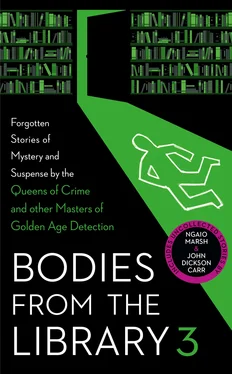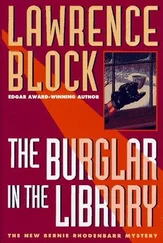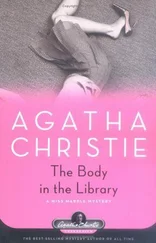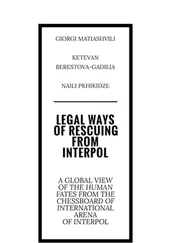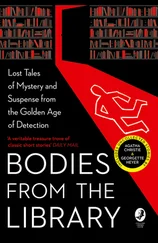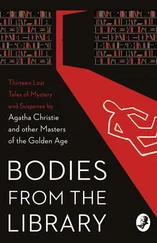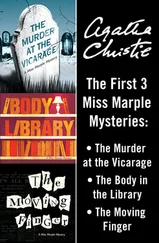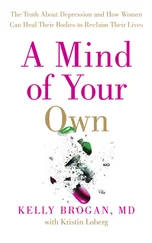Sayers also wrote widely in many genres and, for some of her admirers, her crime stories and her studies of the genre are merely a distraction from even greater achievements: her analyses of Christian doctrine and her translations of Dante. For the majority, however, the reverse is certainly true.
There is the Wimsey canon—twenty-one short stories and eleven novels, several of which were memorably televised, first with Ian Carmichael ( Lord Peter Wimsey , 1972–1975), and subsequently with Edward Petherbridge ( A Dorothy L. Sayers Mystery , 1987). There are also the delightful stories of Montague Egg, a travelling wine salesman, and various non-series stories, the foremost being the extraordinary ‘Blood Sacrifice’. As with the best of her contemporaries, Sayers draws on tropes of the genre—the impossible crime, the invisible weapon and so on—to create puzzles that remain as entertainingly baffling today as when they were first published, in some cases nearly a century ago. And as with Charles Dickens, her work is peppered with memorable characters, not the least of whom is the detective novelist Harriet Vane, in many ways a self-portrait of Sayers.
‘Smith and Smith, Removals: I. The House of the Poplars’ by Dorothy L. Sayers is a previously unpublished manuscript held by the Marion E. Wade Center, Wheaton College, IL, USA, which has the largest and most comprehensive collection of published and unpublished resources by and about Sayers worldwide. The original manuscript is twenty-eight handwritten pages with revisions by Sayers; the Wade Center manuscript number is DLS/MS-187. It was the first of two stories written by Sayers in the 1920s featuring the removals firm of Smith and Smith. The other, ‘The Leopard Lady’, was collected in In the Teeth of the Evidence (1939) and filmed with Boris Karloff for the American television series Lights Out in 1950.
THE HAMPSTEAD MURDER
Christopher Bush
It can be an absorbing undertaking, when the means are available, to trace to their original sources events which have proved momentous and to discover how trivial were the small beginnings that set them in motion. Even the hydrogen bomb can be traced directly back to a murder in Sarajevo. All our lives are shot through with the most incredible of coincidences. You happen to change the direction of a walk and you meet someone who changes the direction of your life.
The Hampstead Murder was a case in point. A man in Scotland wrote a letter to The Times and, by chance, The Times found it interesting enough to print. Because of that letter, which had nothing whatever to do with murder, a woman was strangled in a London suburb. You may not recall that murder. It created no excitement and never got into the headlines. The woman was found with a noose around her neck, and the killing could have been accomplished in a matter of seconds. As murders go, it was exceptionally swift and abrupt.
Considering its ownership there was nothing unusual about the room where she was found. It smelled faintly of pot-pourri, and its charming furniture included some delightful period pieces. Its china and pictures had quality, its carpet was Chinese and its chairs were Chesterfield-soft and seductive.
Then there was the woman, in a charming afternoon frock, with a face like a surprised Madonna and hair like an aureola. She was wearing about a thousand pounds’ worth of jewellery, which would unquestionably have proved tempting, in short, to a burglar. There was no blood, no signs of a struggle. No vulgarity, but everything quiet and restrained, except for that deadly circle around her neck. Even the murderer was only a part of that general background—a quiet man, writing peacefully at a Queen Anne bureau.
Later, of course, there was to be the comparative vulgarity of a trial, even if it ended in a matter of minutes with the knowledge that the murderer was hopelessly insane. And the reason of it all—let me repeat—was a letter that was written to The Times .
To get to that letter we must leave the charm of that drawing-room in Hampstead and come nearer town to Porter Street, Mornington Crescent. In Victorian times the Crescent had dignity and aloofness. Porter Street still retained something of that dignity even if its Georgian houses had become offices and flats. It was in one of these flats that Lutley Prentisse was working on a certain June morning.
It would be more true to say that he should have been working. In front of his swivel chair were table and typewriter but he sat there with the tips of his fingers together and his brow wrinkled in thought. You would have needed no particular shrewdness to have guessed that he was a writer.
But he was a writer with a difference. His name was far from well-known. He had three novels to his credit, two having as their theme extramarital intrigue and the other concerned with one of those coteries to be found on the French Riviera. The last only had sold quite well—a matter of gratification to its author purely from pride of workmanship. Money is always useful, but his private income was about two thousand a year after taxes, and the handsome royalties he received from his publisher made no great difference.
The fact of the matter was that he had drifted into writing almost without knowing it, and primarily to escape from boredom. The first two years after his marriage had been a routine of which he had tired—Switzerland in mid-winter, the Riviera in Spring, golf in England in the summer and weekends at various house parties, with a week or two at Deauville or Le Touquet in early autumn. After that town—the club, theatres and the multitudinous rush and jigsaw fitting-in from morning till night.
All that was the life that suited Dorothy Prentisse so well. At golf Lutley was a shaky sixteen. She could give a low handicap man a good game and from the men’s tees at that. Her tennis was almost first-class. She played a really good hand at bridge—a bit aggressive, perhaps, but rarely a loser unless cards and partners were impossible. Lutley was a cautious bidder if ever there was one. He was good, however, for what he said, and never less.
But he took things less seriously. In golf the game counted, not the figures—or at least that was how things had been before his marriage. Maybe it was the almost venomous earnestness with which Dorothy did things that first began to make them pall.
In some ways you might have thought them an ill-sorted couple. He was short and sturdy, with quiet brown eyes, and a kind of intellectual shyness. She was tall for a woman, handsome in a glittering way and with qualities that would have made for attractiveness only to a man quite different from Prentisse—knowledge of the jargons and sporting chatter, and with it that shrewd judgment that knows when to be only a highly ornamental background.
At Cambridge Lutley had read history and, until his marriage, had contributed occasionally to various reviews. That particular writing had been a part of his leisure, but later, when the hectic life of his first married years had begun to seem aimless and even boring, he had thought with regret of the pleasure his earlier labours had given him. Out of it had come his attempt at a first novel, and its publication.
All this was just before the last war when money was money and life less demanding. As for his marriage, he had met Dorothy at the house of George Foster, an old Cambridge friend, and it so happened that she had been at school with George’s wife, Miriam. Dorothy’s father had just died—he had been vicar of Purfield Warren—and she had come into a reasonable sum of money.
Six months after that first meeting they were married. He was then thirty-one and she twenty-eight, though she claimed to be younger. It was a love match on his side if not on hers. Her friends agreed that he had married a most attractive woman, her enemies that she had done exceptionally well for herself. But it would have been hard to judge objectively the success or otherwise of that marriage. Lutley, one could see through: the woman he had wed was far more inscrutable. In public a softly-murmured ‘Darling!’ and a playful tap are no particular signs, especially when the other hand holds a liqueur glass drained for the eighth time.
Читать дальше
